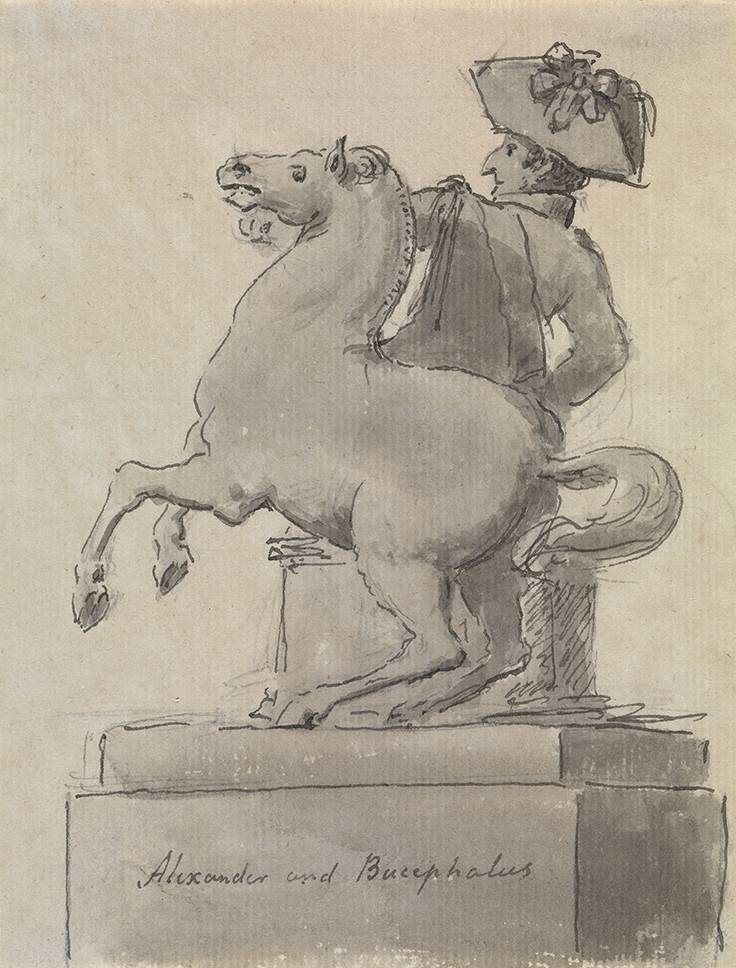In this drawing, George Dance is gently mocking the Duke of Wellington, the newly minted hero of the Napoleonic Wars. Showing Wellington, with his distinctive profile, in the guise of one of the Discuri from the Palazzo del Quirinale in Rome. The colossal Roman sculptures showed Castor and Pollux each with a monumental horse. The victory of Waterloo in 1815 prompted an outpouring of public sculpture, culminating in the monumental – and somewhat controversial - statue of Achilles in Hyde Park. Dance’s title seems to allude to Wellington’s fondness for his favourite horse – as Alexander the Great had Bucephalus, so Wellington had Copenhagen.
George Dance, the son of a successful architect, also George, and brother to the painter Nathaniel, was himself an accomplished and celebrated architect. A founder member of the Royal Academy, Dance was also a fluent and prolific draughtsman. Dance, a man of wide-ranging interests, never let architecture dominate his life and in later years he gained greater satisfaction from arts other than architecture. He possessed considerable musical skill as an instrumentalist and composer: Haydn became a valued friend. His interest in drawing also grew: his distinctive and highly finished pencil profile portraits constituted a vivid gallery of Regency London's artistic establishment of the day, and etchings after them by William Daniell were published in 1804–14. Simultaneously, Dance delighted in producing humorous cartoons and caricatures and a sizeable body of his amusing drawings survives.


